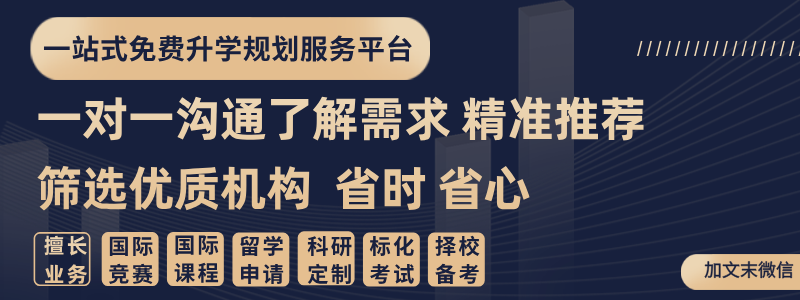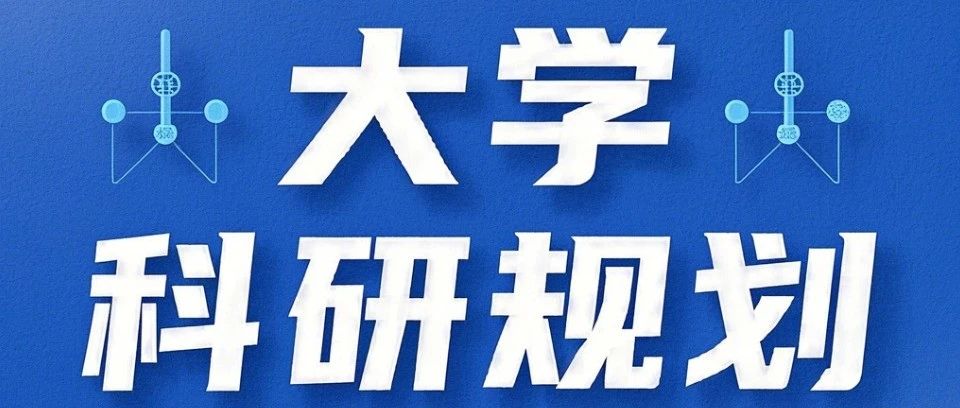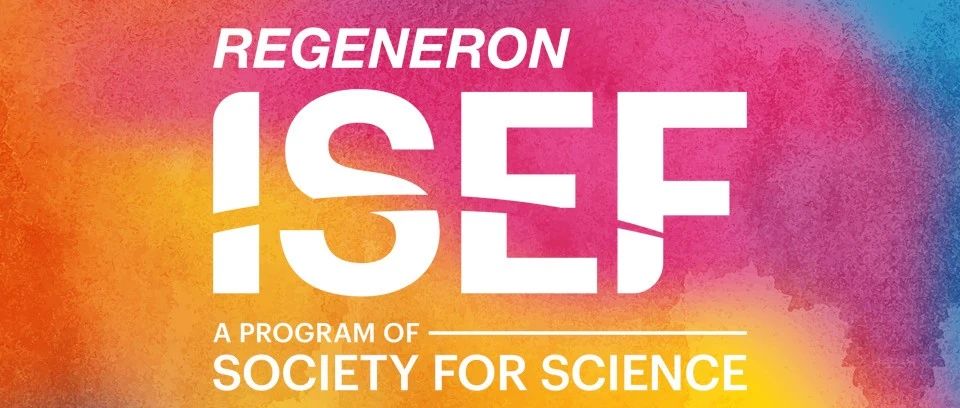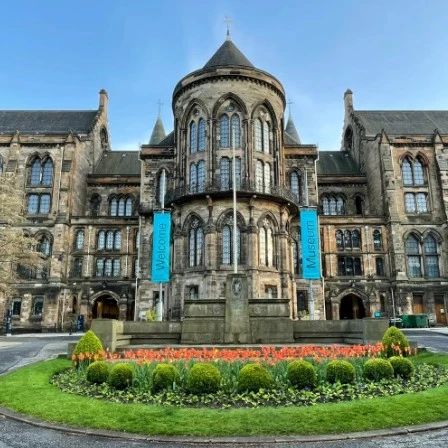文章目录[隐藏]
中文赛题:建设更美好城市的路线图
背景
交通系统可以帮助或妨碍城市的增长以及居民的生活。成功的交通基础设施能够吸引企业、学校、游客和新居民。城市面临的交通挑战是复杂且交织在一起的。各个利益相关方(城市居民、企业主、郊区居民、通勤者、通道、游客等)在这些系统中有不同的需求和优先事项。通常,交通系统的一个元素或组件会偏向某个利益相关方,从而干扰系统中其他需求。高速公路、公交路线和铁路系统可能会干扰本地城市骑车人和行人的出行,反之亦然,当车辆驾驶员被城市人行道和交通信号灯耽搁时。有时,最有效的交通系统的最大障碍是城市的地理条件——水域(河流、港口、溪流、排水沟)或地形(山丘、沟渠、山谷、斜坡)。甚至土壤成分和气候条件也可能造成干扰。
情况
马里兰州巴尔的摩市是一个受到老化基础设施和有限交通选择影响的城市,这些问题影响了人们的生活并阻碍了经济增长。除此之外,最近发生了一个主要桥梁(弗朗西斯·斯科特·基桥)的坍塌,关闭了通过其繁忙港口的主要高速公路。巴尔的摩市一直在制定改进其交通网络的计划,包括通过基础设施改善和提升公共交通来实现其可持续发展目标。这些目标基于识别、优先考虑并实施一些倡议,如利益相关方之间的合作、维护或更新物理系统、更有效地使用数据,以及寻求技术进步来提升居民和游客的生活质量。
巴尔的摩是一个繁忙的港口和航运中心,位于一条主要的州际高速公路(I-95)上。它的一些过路和通勤高速公路及铁路线路阻碍或干扰了街道和社区,使得城市居民很难进入航运行业的就业机会,也让当地企业难以运输货物进出社区。通过修复道路、修建绕行道、扩展公共交通选项以及改善港口和机场的通行能力,巴尔的摩希望促进商业发展,并让城市成为一个更好的生活、工作和旅游的地方。
最近,借助国家资助和支持,美国一些城市已经制定了基础设施计划,旨在拆除那些将社区与市中心隔开的高速公路,并寻求以重新连接和振兴这些区域的方式进行替代。这些高速公路虽然允许郊区居民通勤到市中心或跨城通勤,但在建设这些高速公路的过程中,城市社区被分割或摧毁。巴尔的摩希望重新连接这些社区,并为居民提供更多绿色空间、更好的公共住房,以及更多的社区娱乐和休闲机会。
以下是四个交通问题的示例:
- 重建坍塌的弗朗西斯·斯科特·基桥(位于港口)。[1]
- 公共铁路系统的不足(MARC、轻轨、重轨),这些铁路连接了已经有多种交通选择的郊区。这些铁路的运力不足以让通勤者和居民轻松使用该系统前往工作地点,而市中心的免费巴士主要服务游客,而不是城市社区的居民。[2]
- 通过西巴尔的摩联合项目(West Baltimore United Project),规划解决US-40(通往无处之路)高速公路多年来对城市社区造成的破坏。[3]
- 巴尔的摩布鲁克林社区一位居民的旅行记,记录了他在参加城市足球比赛后,试图搭乘公交车回家的经历。[4]
要求
巴尔的摩的所有交通计划都涉及多个利益相关方,他们的观点各不相同。您团队的任务是通过推荐改善巴尔的摩交通网络的方法,来提升城市居民的生活质量。
提供了一个包含街道段车辆流量的文件。通过创建巴尔的摩或其某些区域和社区的交通网络,您将能够可视化并理解这些问题。因此,您应该为巴尔的摩交通系统的某一部分或元素构建一个网络模型。
使用您的模型,考虑与以下交通问题相关的项目:
- 弗朗西斯·斯科特·基桥的坍塌对巴尔的摩交通系统产生了巨大影响。您的网络模型展示了桥梁坍塌和/或桥梁重建的影响吗?请确保突出展示对巴尔的摩及周边地区各利益相关方的影响。
- 巴尔的摩市的许多居民步行或乘公交车出行。选择一个影响公交或人行道系统的项目或潜在项目。您的网络模型展示了该项目的影响吗?请确保突出展示对巴尔的摩及周边地区各利益相关方的影响。
- 推荐一个交通网络项目,该项目能最好地改善巴尔的摩居民的生活。
- 这个项目给居民带来的好处是什么?
- 您的项目如何影响其他利益相关方?
- 解释您的项目如何扰乱其他交通需求和人们的生活。
分享您的见解
- 安全是巴尔的摩市面临的一个重大问题。交通系统如何能最好地解决这一问题?
- 向巴尔的摩市市长写一份一页纸的备忘录,描述您的两个项目,包括其对市民安全的好处和缺点。
您的 PDF 解决方案总页数不得超过25页,包括:
- 一页摘要页。
- 目录。
- 完整解决方案。
- 一封给交通官员的信(一页)。
- 参考文献列表。
- AI使用报告(如果使用不计入 25 页总限制)。
注意:完整的 MCM 提交文件没有特定的最低页数要求。您最多可使用 25 页来包含您的所有解决方案内容及其他补充信息(例如图纸、图表、计算和表格)。允许提交部分解决方案。我们允许谨慎使用 AI 工具(例如 ChatGPT),但完成本问题并不一定需要使用 AI 工具。如果您选择使用生成式 AI 工具,必须遵循 COMAP 的 AI使用政策。此政策要求您在解决方案文件的最后额外添加一份 AI 使用报告,不计入 25 页的总限制。
全新 MCM/ICM:在线提交流程
本文旨在协助和指导参加 MCM/ICM 的学生和顾问。在文章中,COMAP 提供了有关使用新在线提交页面的新在线提交流程的信息:
https://forms.comap.org/241335097294056
您需要团队的控制号、顾问 ID 号和问题选择才能完成提交。
提供的文件
这些文件用于帮助学生找到与巴尔的摩相关的数据,以便开始此问题,特别是为构建网络模型来研究这些问题。实际数据,如提供的数据集,通常是非常凌乱的。例如,巴尔的摩的许多道路不仅有路由号码,还可能有街道名称,而这些名称在不同的路段可能会发生变化。因此,数据需要处理。关于如何处理数据的决策和假设是建模过程中的重要部分。此外,团队不只限于使用这些数据。
2025_Problem_D_Data.zip:此压缩文件包含下列9个数据文件:
- Bus_Routes.csv:[5] 该数据集表示2022年巴尔的摩市内MTA公交路线的位置。
- Bus_Stops.csv:[6] 该数据集表示2022年巴尔的摩市内MTA公交车站的位置。
- nodes_all.csv:[7] 该数据集表示通过OpenStreetMaps[8]标记的地理属性位置,提供巴尔的摩的交通数据点。通常,这些是两个交通路径(道路、高速公路、自行车道、人行道等)交汇的地点。
- nodes_drive.csv:[7] 该数据集表示通过OpenStreetMaps[8]标记的地理属性位置,适用于汽车行驶。通常,这些是两个道路或高速公路交汇的地点。
- edges_all.csv:[7] 该数据集表示两个节点之间的交通路径,数据来源于nodes_all.csv数据集。
- edges_drive.csv:[7] 该数据集表示两个节点之间的道路,数据来源于nodes_drive.csv数据集。
- MDOT_SHA_Annual_Average_Daily_Traffic_Baltimore.csv:[9] 该数据集包含马里兰州交通部(MDOT SHA)年均日交通(AADT)数据,涵盖了马里兰州各地的道路及交通流量信息。
- Edge_Names_With_Nodes.csv:[7] 该数据集将nodes_all.csv数据集中的信息与edges_all.csv数据集中的信息相匹配,提供带节点的街道名称。
- DataDictionary.csv:该数据文件描述了提供的每个数据集中的特征。
有许多有价值的数据集可从以下网址获取:
https://baltometro.org/about-us/data-maps/regional-gis-data-center
和
https://opendata.baltimorecountymd.gov/
术语表
通道:旅行者到达目的地必须经过的地方。
基础设施:用于支持或进行人员或货物运输的结构或设施
街道段:数据集或地图中街道或道路部分位置(通常具有起点和终点)的虚拟边缘。
Problem: A Roadmap to a Better City
Background
Transportation systems can help or harm a city’s growth and the lives of its residents. Asuccessful transportation infrastructure can attract businesses, schools, tourists, and new residents. The transportation challenges that cities face are complex and intertwined. The various stakeholders (city residents, business owners, suburban residents, commuters, passthrough travelers, tourists, etc.) have different needs and priorities within those systems. Often one element or component of a transportation system favors one stakeholder over others therefore creating an interference with other needs of the system. Highways, bus routes, and rail systems can interfere with local city bikers and pedestrians and vice versa when vehicle drivers are delayed by city walkways and traffic lights. Sometimes, the biggest obstacle to effective transportation systems is the city’s geography – water (rivers, harbors, streams, drainage runoff) or landforms (hills, ditches, valleys, slopes). Even soil composition and weather conditions can be disruptive.
Situation
Baltimore, Maryland, USA is a city affected by aging infrastructure and limited transportation options that impact people’s lives and hinder its economic growth. Adding to that is the recent collapse of a major bridge (Francis Scott Key Bridge) closing a major highway across its busy harbor. Baltimore has been making plans to improve its transportation network through infrastructure improvement and enhancing its public transportation as a part ofits sustainability goals. These goals are based upon identifying, prioritizing, and implementing initiatives such as collaboration between stakeholders, maintaining or updating its physical systems, using data more effectively, and seeking technological advancements that enhance the lives of its residents and visitors.
Baltimore has a bustling port and shipping center along with being located on a major interstate highway (I-95). Several of its passthrough and commuter highways and rail lines block or interfere with streets and neighborhoods making it difficult for city residents to access job opportunities in the shipping industries and for local businesses to transport goods into and around neighborhoods. Through planning initiatives to repair roads, build bypasses, expand public transit options, and improve access to ports and airports, Baltimore hopes to facilitate commerce and make the city a better place to live, work, and visit.
Recently, through national funding and support, US cities have developed infrastructure plans to remove highways that divide neighborhoods into their downtown areas and seek to replace them in ways that reconnect and revitalize those areas. While the highways allow suburban residents to commute downtown or across the city to their jobs, urban neighborhoods were separated or destroyed in the construction of these highways. Baltimore hopes to reconnect these communities and provide more sustainable communities with more green spaces, better public housing, and opportunities for community entertainment and recreation.
As examples, four transportation issues are outlined in these references:
- The rebuilding of a collapsed bridge (Francis Scott Key Bridge) in the Harbor.[1]
- The inadequacy of the minimal public rail systems (MARC, light rail, heavy rail), which connect suburbs that already have several transportation options. The rail transits are not substantial enough to enable commuters and residents to easily use the system to get to the workplace and the downtown free buses primarily help tourists and not the residents of intercity communities.[2]
- Planning for fixing the disruption over decades on urban communities by US-40 (Highway to Nowhere) through the collaborative West Baltimore United Project.[3]
- A travelogue of a resident of Brooklyn (community in Baltimore) and his ordeal of trying to use buses to get home after attending a football game in the city.[4]
Requirements
All of Baltimore’s transportation plans affect multiple stakeholders with differing perspectives. Your team’s assignment is to improve the lives of the city’s residents by recommending ways to improve Baltimore’s transportation network.
A file with vehicle counts on street segments is provided. Creating transportation networks for Baltimore or one of its areas and communities will help you visualize and understand the issues. Therefore, you should build a network model(s) for some part or element of Baltimore’s transportation system. Using your model, consider projects related to these transportation issues:
- The collapse of the Francis Scott Key Bridge had a large impact on the transportation system of Baltimore. What does your network model(s) show is the impact of the bridge collapse and/or the reconstruction of the bridge? Be sure to highlight the impacts on the various stakeholders in and around Baltimore.
- Many residents of the City of Baltimore walk or travel by bus. Select a project or potential project that impacts the bus or pedestrian walkway systems. What does your network model(s) show is the impact of this project? Be sure to highlight the impacts on the various stakeholders in and around Baltimore.
- Recommend a project for the transportation network that best improves the lives of the residents of Baltimore.
- What are the benefits to residents of this project?
- How does your project impact other stakeholders?
- Explain the ways that your project disrupts other transportation needs and people’s lives.
Share Your Insights
- Safety is a significant issue facing the City of Baltimore. How can the transportation system be used to best address this issue?
- Write a one-page memo to the Mayor of Baltimore describing two of your projects, including the benefits and drawbacks on the people and their safety in the city.
Your PDF solution of no more than 25 total pages should include:
- One-page Summary Sheet.
- Table of Contents.
- Your complete solution.
- One-page letter to the transportation officials.
- References list.
- AI Use Report (If used does not count toward the 25-page limit.)
Note: There is no specific required minimum page length for a complete MCM submission.You may use up to 25 total pages for all your solution work and any additional information you want to include (for example: drawings, diagrams, calculations, tables). Partial solutions are accepted. We permit the careful use of AI such as ChatGPT, although it is not necessary to create a solution to this problem. If you choose to utilize a generative AI, you must follow the COMAP AI use policy. This will result in an additional AI use report that you must add to the end of your PDF solution file and does not count toward the 25 total page limit for your solution.
NEW MCM/ICM: Online Submission Process
The purpose of this article is to assist and guide students and advisors participating in MCM/ICM. In the article, COMAP, provides information about the new online submission process using the new online submission page:
https://forms.comap.org/241335097294056
You will need your team's control number, advisor id number and your problem choice to complete your submission.
Files provided
These files are provided to assist students with finding data relevant for Baltimore to begin this problem, particularly to build a network model to study these problems. Real data, like that in the sets provided, is often quite messy. For example, many roads in Baltimore not only have a route number identifying them, but also a street name that may change from one section to another. Therefore, the data will require manipulation. Decisions and assumptions about how to manipulate the data are an important part of the modeling process. Moreover, teams are not limited to these data.
2025_Problem_D_Data.zip: This zip file contains all 9 of the data files listed below.
- Bus_Routes.csv:[5] This dataset represents the locations of MTA bus routes within the City of Baltimore as of 2022.
- Bus_Stops.csv:[6] This dataset represents the locations of MTA Bus Stops as of 2022 within the City of Baltimore.
- nodes_all.csv:[7] This dataset represents the locations of tagged geographic attributes by OpenStreetMaps[8] that provide transportation data points in Baltimore. Generally, these are locations where two transportation paths (road, highway, bikeway, walkway, etc.) intersect.
- nodes_drive.csv:[7] This dataset represents the locations of tagged geographic attributes by OpenStreetMaps[8] for car travel. Generally, these are locations where two roads or highways intersect.
- edges_all.csv:[7] This dataset represents the transportation paths between two nodes from the nodes_all.csv dataset.
- edges_drive.csv:[7] This dataset represents the roadways between two nodes from the nodes_drive.csv dataset.
- MDOT_SHA_Annual_Average_Daily_Traffic_Baltimore.csv:[9] MDOT SHA Annual Average Daily Traffic (AADT) data consists of linear & point geometric features which represent the geographic locations & segments of roadway throughout the State of Maryland that include traffic volume information. Traffic volume information is produced from traffic counts used to calculate annual average daily traffic (AADT), annual average weekday traffic (AAWDT), AADT based on vehicle class (current year only) for roadways throughout the State.
- Edge_Names_With_Nodes.csv:[7] This dataset pairs the information from the nodes_all.csv dataset with information from the edges_all.csv dataset to provide street names with nodes.
- DataDictionary.csv: This data file describes the features in each of the data sets provided for this question.
There are many valuable data sets available at:
https://baltometro.org/about-us/data-maps/regional-gis-data-center
and
https://opendata.baltimorecountymd.gov/
Glossary
Passthrough: A place that travelers have to go through to get to their destinations.
Infrastructure: A structure or facility that is used to support or conduct transportation of people or goods
Street segments: virtual edges in a dataset or map of locations of parts (usually with a start point and end point) of a street or road.
参考资料[1]
Rebuild of Baltimore’s Key Bridge to start ConstructConnect. Rebuild of Baltimore's key bridge to start. ConstructConnect. 2024 Jan 18: https://www.constructconnect.com/construction-economic-news/rebuild-of-baltimores-key-bridge-to-start
[2]
Reconnecting communities in West Baltimore SCIRP. Reconnecting communities in West Baltimore. SCIRP. 2023 Dec 10.: https://www.scirp.org/journal/paperinformation?paperid=138654
[3]
Reconnecting communities in West Baltimore Streets of Baltimore. Reconnecting communities in West Baltimore. Streets of Baltimore. 2024 Jan 15: https://streetsofbaltimore.com/reconnecting-communities-in-west-baltimore
[4]
Transportation equity problems in Baltimore WYPR. With the national spotlight on Baltimore, transportation equity problems shine through. WYPR. 2024 Feb 26.: https://streetsofbaltimore.com/reconnecting-communities-in-west-baltimore
[5]
City of Baltimore. Baltimore Transit Data: Bus Routes [Internet]. Baltimore, MD: City of Baltimore; 2025 [cited 2025 Jan 7]. : https://data.baltimorecity.gov/datasets/d17c836e96324823b989378735b52249_0/about
[6]
City of Baltimore. Baltimore Transit Data: Bus Stops [Internet]. Baltimore, MD: City of Baltimore; 2025 [cited 2025 Jan 7].: https://www.google.com
[7]
Boeing, G. 2024. “Modeling and Analyzing Urban Networks and Amenities with OSMnx.” Working paper: https://geoffboeing.com/publications/osmnx-paper/
[8]
OpenStreetMap contributors. OpenStreetMap [Internet]. [place of publication unknown]: OpenStreetMap Foundation; 2025 [cited 2025 Jan 10]: https://www.google.com
[9]Maryland Department of Transportation. MDOT SHA Annual Average Daily Traffic (AADT) Locations [Internet]. Baltimore, MD: Maryland Department of Transportation; 2025 [cited 2025 Jan 10]: https://data.imap.maryland.gov/datasets/maryland::mdot-sha-annual-average-daily-traffic-aadt-locations/explore












